Editor’s note: In March 2019, Rob Faulkner was named global director for Cook Medical’s Urology specialty. He has been with Cook for 19+ years—previously serving in the Endoscopy specialty as a district sales manager, regional manager, North America sales manager, and, for the last five years, global sales director. He comes to the Urology team with an eagerness to share from his sales experience and his understanding of the global medical device industry.
The challenge of getting to know the Urology specialty excites me in this next chapter of my career. It’s the new, the unknown, that forces me to get out of bed every day, read a medical journal that I may never have read, and dive into this new world. It’s pushing me out of my comfort zone to learn things I don’t know that well. I’ve been with Cook for nearly two decades, all that time spent working in Endoscopy, and while I love that specialty and I’m passionate about it, the opportunity to learn something new: that’s really cool, too.
My outsider perspective brings a certain independence, and it’s from my experience and my tenure with Cook that I know working side-by-side with urologists will help the specialty evolve and, ultimately, thrive.
Experience is important, and while I don’t have any preconceived notions about the way the urology market should be today or the way it might look in five years, what I do possess is a drive and a forward-thinking outlook to champion Cook and continue our legacy of collaboration and innovation. My outsider perspective brings a certain independence, and it’s from my experience and my tenure with Cook that I know working side-by-side with urologists will help the specialty evolve and, ultimately, thrive.
I was certainly an outsider when I had my first interaction with Urology last September. Prior to even knowing I was going to be in this new role, I attended a urology tradeshow in Paris with DJ Sirota, vice president of Cook’s MedSurg division. I had a chance to talk to quite a few people about what they do in their practice and how they engage patients. Two things especially stood out to me. First, I noticed that urologists can be very laid back. And second, urologists are open to discussion. And the things that we talked about—stricture management, stone retrieval—illustrated to me just how similar urologists are to endoscopists in how they treat a patient. Even though they treat different parts of the body, they are amazingly similar, even down to the tools they use. We can use those parallels to our advantage as we explore cross-specialty opportunities. In all my years with Cook in Endoscopy, I’ve attained a keen knowledge of the consumables market with a global perspective, along with an in-depth understanding of the contracting world. That experience is vital as we start writing this next chapter.
It starts with cultivating an environment that fosters learning and opportunity, and for me, for us, that starts with cultivating a strong team and growing our relationships.

Rob Faulkner is the global director for Cook Medical’s Urology specialty.
Obviously, I still have a lot to learn in terms of what the opportunities are in the various regions, but it starts with cultivating an environment that fosters learning and opportunity, and for me, for us, that starts with cultivating a strong team and growing our relationships. When I look around at the team I’m privileged enough to work with now, I see strong leadership in place in each of the areas that are important to the business. My goal is to make sure I foster that leadership, foster collaboration, and show our potential to move Cook forward and make Urology better as well.
In the few short months I’ve been in my new role, I’ve been impressed with what I’ve seen. Despite the challenges inherent in business, ours is a team with a fighting spirit, eager to seek out opportunity and eager to make a difference.
Needless to say, I’m looking forward to getting to know the specialty more, especially as I meet with more and more urologists in the coming weeks and months. I recently attended the AUA annual meeting in Chicago, where I met with individuals from around the world. It was a great time, and it was a productive time for me to share our goals and our vision for the future. I feel more connected. And I feel confident knowing there’s a lot of opportunity here, and I’m excited to see what lies ahead for us and for the specialty.
Whether you prefer the stiffness and control of stainless steel or the flexibility and resiliency of nitinol, Cook Medical has a comprehensive assortment of wire guides to fit your preferences and meet your procedural needs.
Start exploring our wire guide lineup. Click on the product name for more information and for additional resources.
Nitinol
Nitinol—a nickel titanium alloy—is flexible and resists kinking. Our nitinol wire guides have a hydrophilic coating to reduce friction, and they feature 1:1 torque control that enables you to manoeuvre the wire guide with precision.
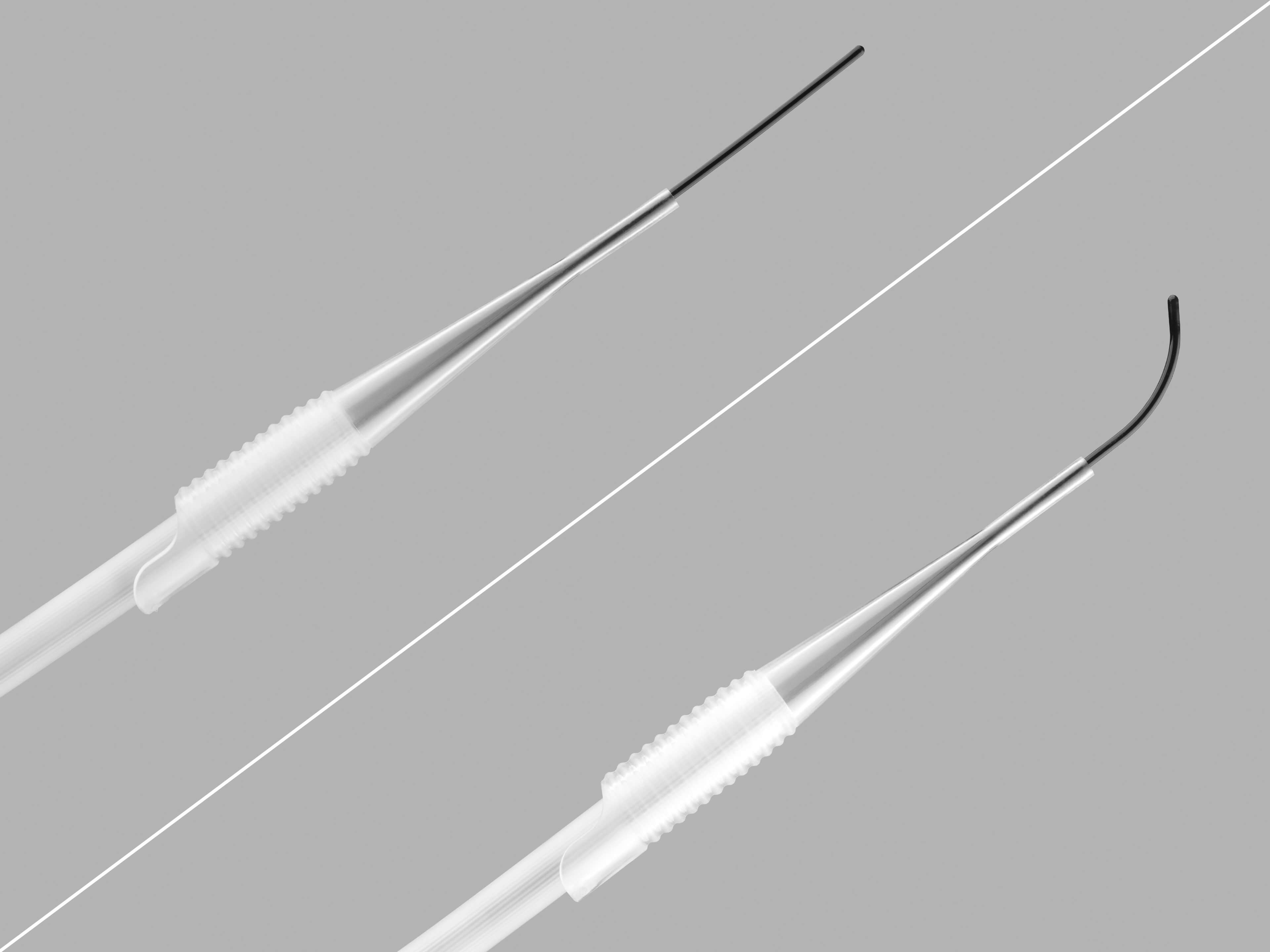 HiWire®Nitinol Core Wire Guide
HiWire®Nitinol Core Wire Guide
Used to gain ureteral access, to establish a tract, and to assist in the placement, replacement, and exchange of medical devices during urological procedures. Choose between standard- and stiff-body options.
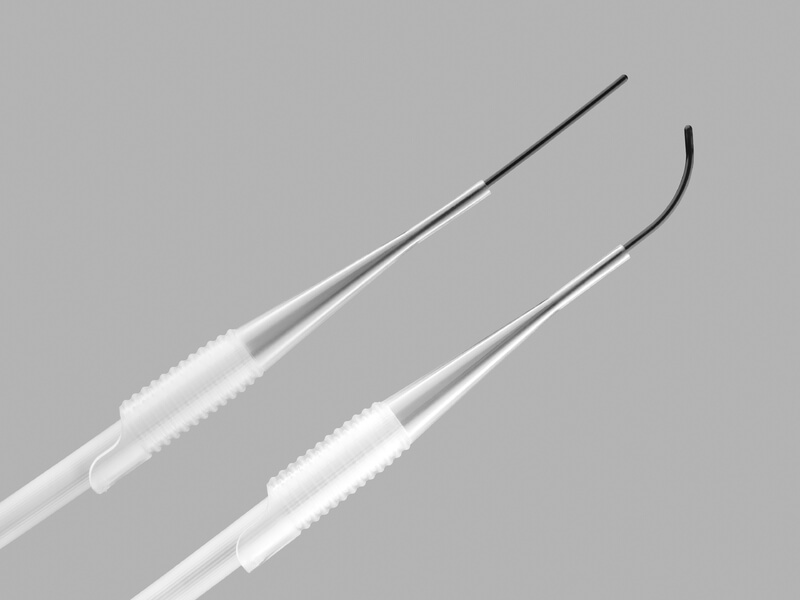 BiWire®Nitinol Core Wire Guide
BiWire®Nitinol Core Wire Guide
Used to gain ureteral access, to establish a tract, and to assist in the placement, replacement, and exchange of medical devices during urological procedures. The BiWire has flexible tips at both ends—a straight tip on one end and an angled tip at the other. Choose between standard- and stiff-body options.
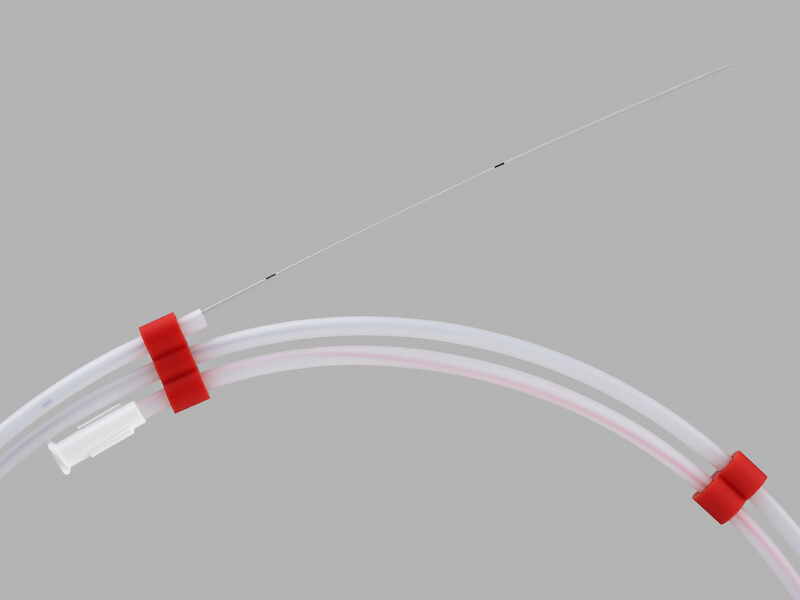 Roadrunner®PC Hydrophilic Wire Guide
Roadrunner®PC Hydrophilic Wire Guide
Used to gain ureteral access, to establish a tract, and to assist in the placement, replacement, and exchange of medical devices during urological procedures. May also be used for catheter positioning and exchange in a tortuous or kinked ureter, traversing a stone en route to the kidney, or in cases demanding enhanced control and high radiopacity. Choose between standard- and stiff-body options. Double flexible tip configurations are also available.
Stainless steel
Designed with a PTFE coating for tactile control and manoeuvrability, our stainless steel wire guides give you the firmness to access and navigate the urinary tract.
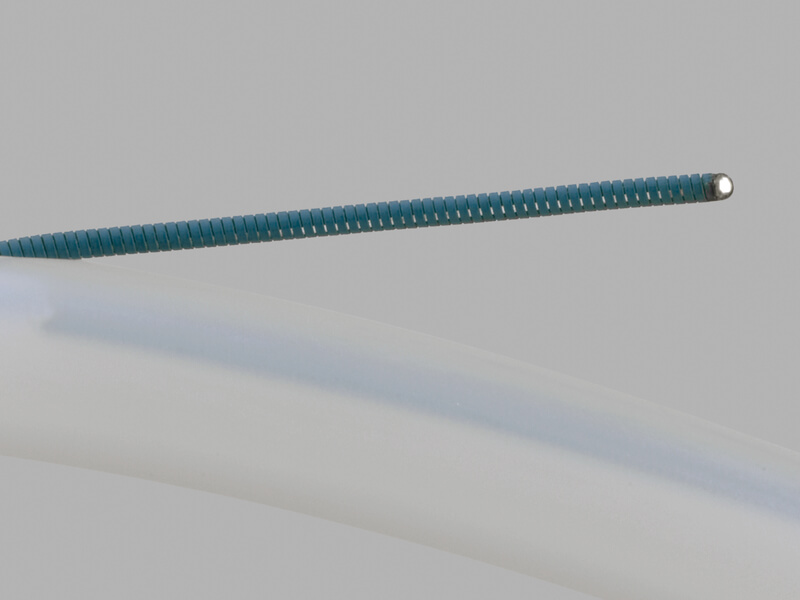 Amplatz Fixed Core Wire Guide
Amplatz Fixed Core Wire Guide
Used to establish a tract and assist in the placement of medical devices. Choose between, stiff, extra-stiff, and ultra-stiff options.
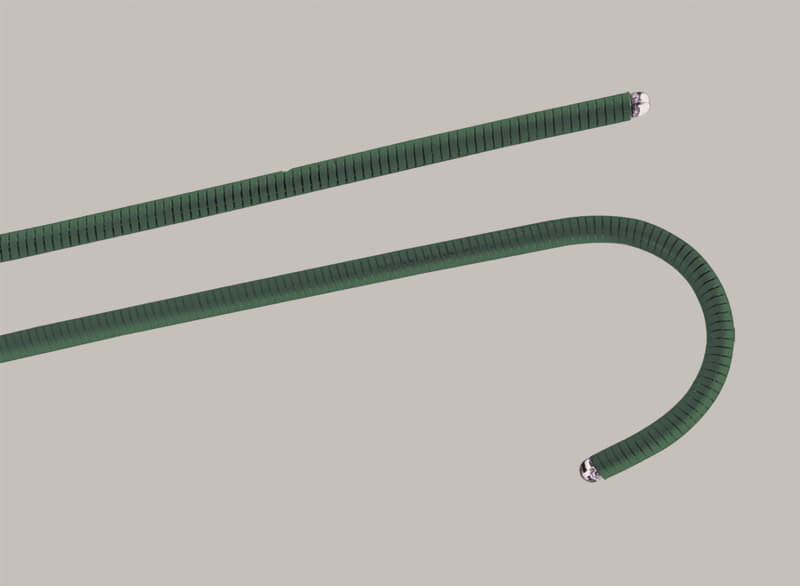 Fixed Core Wire Guide
Fixed Core Wire Guide
Used to gain ureteral access, to establish a tract, and to assist in the placement, replacement, and exchange of medical devices during urological procedures. Choose between standard and Bentson options.
 Movable Core Wire Guide
Movable Core Wire Guide
Used to gain ureteral access, to establish a tract, and to assist in the placement, replacement, and exchange of medical devices during urological procedures. Choose between standard and Coons-Bentson options.
Encountering an encrusted ureteral stent can be all too common when managing numerous urological conditions. Stent encrustation is a serious complication,1 and it presents a significant clinical challenge.2 Polymer stents are the industry standard but quickly become encrusted with stone material and must be exchanged every 3–4 months.3 Cook Medical’s Resonance® Metallic Ureteral Stent, with its patented coil design and 12-month indwell time,4 gives physicians an option to counter encrustation.
For many physicians, encrustation is high on their list of challenges because it can result in significant morbidities such as stone formation, reoccurring obstruction, and urinary tract infection (UTI).5 Finding a solution isn’t always easy. Research has found “a variety of factors contribute to the rate at which this process [encrustation] occurs,” including urine composition, the material a stent is made from, and how long the stent remains indwelling.6 For patients who have had stones before and for those who need to be stented for longer periods of time, the risk of encrustation increases.6
A physician can take certain steps—like choosing a stent that resists encrustation—to help lower a patient’s risk.
“One advantage of [the Resonance] stent over traditional polymer-based stents is resistance to encrustation with stone material, which allows longer dwell times and less frequent exchange procedures.”7
The Resonance stent is used for temporary stenting of the ureter in adult patients with extrinsic ureteral obstruction. The stent is specifically designed to mitigate many of the problems encountered with traditional polymer stents and other forms of treatment. The optimised compressive and radial strength of the Resonance stent, and its resistance to encrustation,8 allow the stent to remain indwelling for up to 12 months. This long indwelling time reduces the need for frequent stent changes and may thereby decrease the risk of infection.
When it comes to a prolonged indwell time, decreasing the risk of infection and resisting encrustation can only occur if everyone involved understands how a stent should be managed. Patient education is imperative and physicians should ensure their patients “understand the importance of proper follow-up and timely stent removal.”2 The physician must clearly state the temporary nature of a stent, the risks of long indwelling times, and the need for follow-up appointments in order to help to avoid complications.6
Learn more about the Resonance stent or request information here.
- Bultitude MF, Tiptaft RC, Glass JM, et al. Management of encrusted ureteral stents impacted in upper tract. Urology. 2003;62(4):622-626.
- Talwar R, Benson M, Fam M, et al. The open approach to severe stent encrustation: a consecutive case series. Urology. 2017;99:e1-e3.
- Venkatesan N, Shroff S, Jayachandran K, et al. Polymers as ureteral stents. J Endourol. 2010;24(2):191–198.
- Wah TM, Irving HC, Cartledge J. Initial experience with the Resonance metallic stent for antegrade ureteric stenting. Cardiovasc Intervent Radiol. 2007;30(4):705-710.
- Dakkak Y, Janane A, Ould-Ismail T, et al. Management of encrusted ureteral stents. African J Urol. 2012;18(3):131-134.
- Vanderbrink BA, Rastinehad AR, Ost MC, et al. Encrusted urinary stents: evaluation and endourologic management. J Endourol. 2008;22(5):905-912.
- Rao MV, Polcari AJ, Turk TM. Updates on the use of ureteral stents: focus on the Resonance stent. Med Devices (Auckl). 2011;4:11-15.
- López-Huertas HL, Polcari AJ, Acosta-Miranda A, et al. Metallic ureteral stents: a cost-effective method of managing benign upper tract obstruction. J Endourol. 2010;24(3):483-485.
What’s in a name?
We were very intentional when we named our nitinol stone extractors, right down to each device’s unique spelling. The uppercase N in each name speaks to the innovative technology that is nitinol. Each device’s name also has a double meaning as an action verb that directly speaks to its capabilities.
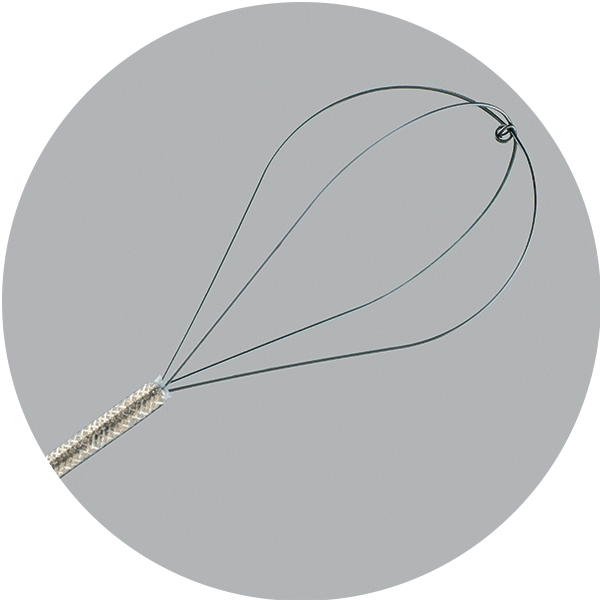 Encircle (v.) – to surround
Encircle (v.) – to surround
The NCircle® Nitinol Tipless Stone Extractor, introduced 20 years ago, was the very first extractor to feature nitinol construction. It was also the first tipless basket design. Because it is truly tipless, you can position the basket flush with the mucosa to surround a stone. To strengthen our game-changing NCircle offering, we have a Delta Wire® option that provides increased radial force, and a helical design that may aid in stone capture.
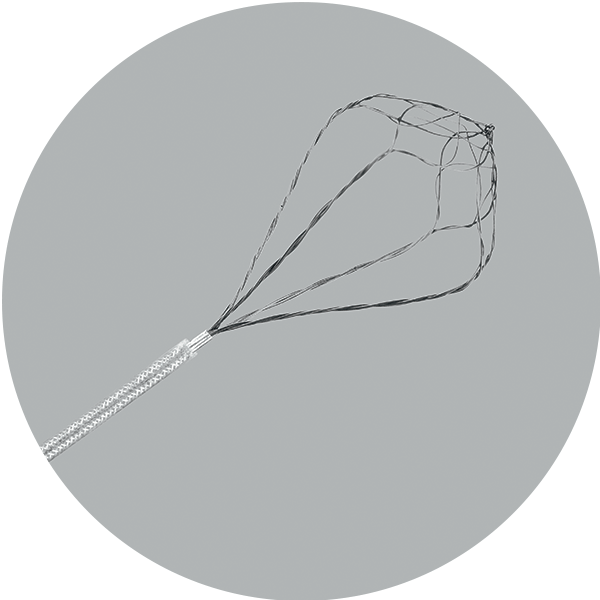 Encompass (v.) – to enclose
Encompass (v.) – to enclose
The multiwire design of the NCompass® Nitinol Stone Extractor produces a netting effect that helps you enclose smaller fragments and could prevent stone migration.
 Engage (v.) – to secure
Engage (v.) – to secure
The grasper-like design of the NGage® Nitinol Stone Extractor allows you to directly target a stone and secure it for removal or reposition and release it to be fragmented.
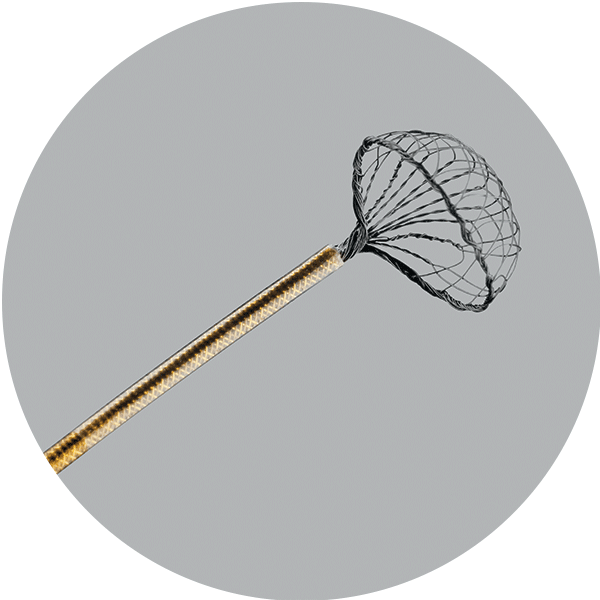 Entrap (v.) – to catch
Entrap (v.) – to catch
The NTrap® Stone Entrapment and Extraction Device features a bowl-like basket that is designed to catch fragments and minimise stone migration during lithotripsy.
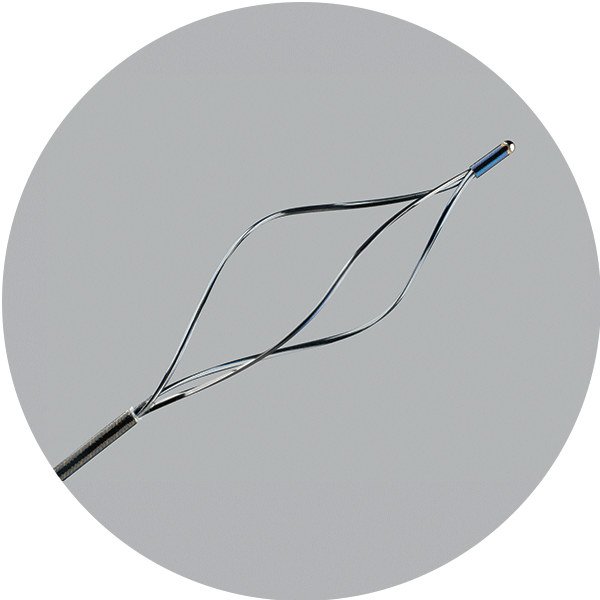 Enforce (v.) – to obtain with force
Enforce (v.) – to obtain with force
The NForce® Nitinol Helical Stone Extractor is constructed of Delta Wire to help you obtain stones with increased radial force and greater radial dilation.
—
The perks of nitinol
Taking it a step further, we offer a trio of options for percutaneous procedures that borrow from our flexible basket designs and incorporate a rigid, stainless steel cannula.
At Cook, nitinol is the name of the game. Take action to extract, and choose from our 26 configurations.







 Encircle (v.) – to surround
Encircle (v.) – to surround Encompass (v.) – to enclose
Encompass (v.) – to enclose Engage (v.) – to secure
Engage (v.) – to secure Entrap (v.) – to catch
Entrap (v.) – to catch Enforce (v.) – to obtain with force
Enforce (v.) – to obtain with force